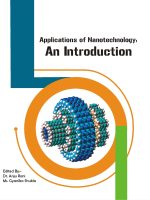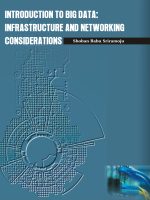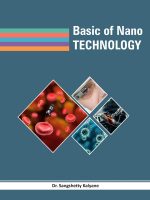The inability to store hydrogen poses a major obstacle to the development and commercialization of hydrogen-powered automobiles. If a light-duty automotive vehicle platform is to have a driving range of more than 300 miles, on-board hydrogen storage in the range of around 5–13 kg is necessary.
Compressed hydrogen gas tanks, liquid hydrogen tanks, cryogenic compressed hydrogen, metal hydrides, high-surface-area adsorbents, and chemical hydrogen storage materials are some of the current on-board hydrogen storage methods being used. “Reversible” on-board hydrogen storage solutions include gas or liquid storage, storage in metal hydrides or high-surface-area adsorbents, and on-board hydrogen regeneration or replenishment. Hydrogen regeneration is not achievable on board a vehicle for chemical hydrogen storage options (such as a chemical reaction to make hydrogen on board the vehicle), hence the spent materials must be removed from the vehicle and regenerated elsewhere.
Author's Details
Dr. Patel Badari Narayana is a Mechanical engineer with above 16 years of experience in Industry and academics. He obtained his Masters in Energy Systems from JNTUCEA, Ananthapuramu and Ph.D. from JNT University, Anantapur. He has nearly 10 years of industrial experience in design & integration of solar PV power plants, Solar water pumping systems and Solar thermal energy systems. His present areas of research are Solar PV, hybrid energy systems, and renewable energy systems modelling & simulation using artificial intelligence techniques
Dr. Asheesh Kumar belongs to Banda District of Uttar Pradesh. He is B. Tech. in Mechanical Engineering, M. Tech. in Materials Science & Engineering, and Ph.D. in Materials Science (Energy Storage and Conversion). His research interests include Materials for energy conversion and storage, Nanostructured carbon materials, Supercapacitors, Li-ion Batteries, Fuel Cells, Composite materials and sustainable materials and methods for future. He has about seven years of experience in academics. At present he is working as Assistant Professor in Department of Mechanical Engineering (Mechatronics) in Mahatma Gandhi Institute of Technology, Hyderabad, India.
Dr. Shantanu Kumar Das was born in Cuttack district, Odisha, India in 1991. He received the B.Tech. degree from Veer Surendra Sai University of Technology, Burla, Odisha in 2012 and the M.Tech. degree in mechanical and industrial engineering (Specialization: CAD, CAM and Robotics) from Indian Institute of Technology Roorkee, India, in 2014. He has earned the Ph.D. degree from Mechanical and Industrial Engineering Department (Specialization: CAD and Product Design), IIT Roorkee, India, in 2020. Currently, He is working as an assistant professor at G H Raisoni University Saikheda (MP), India. His research interests include knowledge-based engineering, product lifecycle management (PLM), computer integrated manufacturing, robotics, variant design, assembly process planning and material science. He has contributed in more than 10 SCl/SCIE/Scopus/UGC care listed, International, National journals, conferences and seminars. This book is the maiden attempt of the author and hope that it will be of great help to the students, academicians and researchers.
Dr. S. Narasimha Kumar is a Mechanical engineer with above 20 years of experience in Industry and academics. He obtained his Masters in Thermal Engineering from Anna University, Guindy, Chennai and Ph.D. from Osmania University. He specialized in thermal engineering which includes alternative fuels and solar thermal energy systems. He has published over 40 research papers in various International and national journals.
Customer Reviews
There are no reviews yet.
General Inquiries
There are no inquiries yet.










Be the first to review “Hydrogen Generation and Storage Technologies”
You must be logged in to post a review.